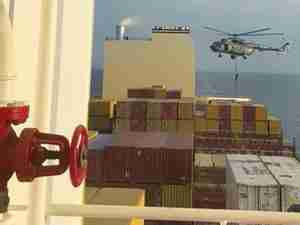New sanctions on Iran and Russia won’t derail the container market recovery, but would suppress potential growth.
US President Donald Trump’s unilateral decision earlier this month to pull his country from the Iran nuclear deal (the Joint Comprehensive Plan of Action that was co-signed by Iran, China, the European Union, France, Germany, Russia and the United Kingdom in July 2015), has the rest of the world scrabbling for a Plan B.
Should negotiations fail to resolve the matter all non-US countries will be faced with a thorny dilemma: how to continue trading with Iran without catching heat from America? The threat of so-called ‘secondary sanctions’, whereby the US punishes foreign firms for doing business with Iran, will inevitable see companies acquiesce to the demands of the biggest market. MSC, the world’s second largest container line, is reportedly no longer serving Iran.
This won’t be such a problem for US companies as America barely does any trade with Iran. Figure 1 shows a breakdown of Iran’s trading partners this decade and the US’ share of two-way trade is virtually imperceptible on the chart at just 0.4% last year. The EU, on the other hand, has rapidly been reacquainting itself with Iran since the end of sanctions in 2016, rebuilding its trade share to 25% last year. It had been around 45% in pre-sanctions 2011.











